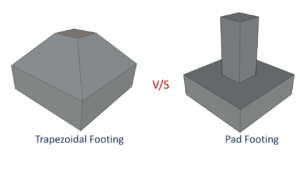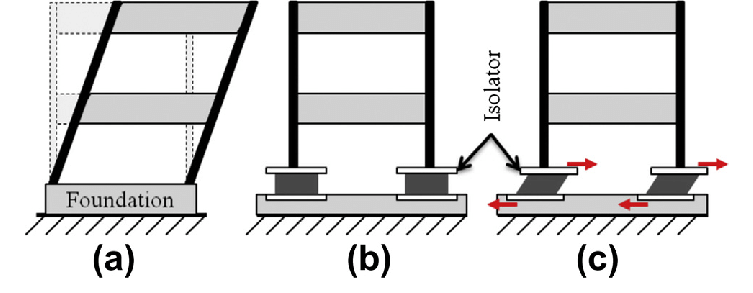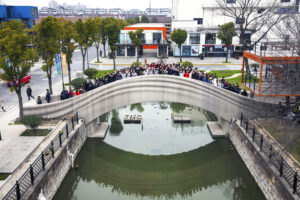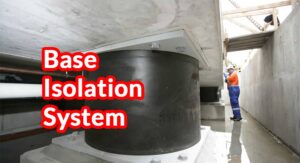
Base Isolation System

Base isolation system is introduced in high rise buildings is to prevent the damage due to seismic forces. In base isolation system suspension or series of bearing pads is introduced in-between sub-structure and superstructure. When the earth shakes due to seismic forces, the suspension prevents the force transfer from ground to the superstructure.
The isolators are designed in a way to absorb energy and induce a damping effect on the building. The buildings don’t experience the movement due to earthquake because of the flexibility of structure acquired by base isolation. This method was introduced in the 1900s but came to a practical stage in seismic-resistant building design by the 1970s.
Principle of Base Isolation System
In conventional high rise buildings, the base is constructed as rigid. So during an earthquake, the superstructure also moves with foundation and earth due to the load transfer from the ground to the structure. The displacement will be more at top of the building or to be exact 2/3rd height of the building. Being the structure is rigid, the lateral forces due to earthquake can cause damages or even leads to the collapse of buildings (resonance).
The earthquake forces can’t be controlled. So making structure flexible is a better way to prevent the buildings from seismic forces. This is accomplished by placing isolators in the base of the structure. The stiffness has a great effect on lateral forces that experienced on the structure due to ground motion. The ground and sub-structure move with seismic forces and isolator flexes in-between the substructure and superstructure.
Hence the superstructure remains less affected by the earthquake. Base isolation effectively reduces the stiffness of the structure and thus reduces the inertia forces of on the structure. Also, it lowers the natural frequency of earthquake force and prevents the formation of resonance.
The structure which has a rigid base would hold a zero natural period. When the ground moves acceleration induced on the structure which is equal to ground acceleration. Here the relative displacement in-between ground and structure will be zero. But in the flexible structure (base-isolated structures), the natural period is infinity. So when ground move no acceleration induced on the structure and the relative displacement will be equal to ground displacement.
Base Isolation Devices
The base isolation devices are broadly classified into two;
- Elastomeric devices
- Sliding devices
Elastomeric Devices:
As the name indicates this device is composed of elastomeric materials such as rubber materials (includes natural and artificial rubber). The main advantage is its reliance property. But in the case of deformation and durability, this device is not up to the mark. The main elastomeric devices are
- Natural rubber bearing: This type of bearing is formed by placing rubber and steel plates in thin layer by layer arrangement. They are joined together by vulcanization process under pressure and heat. These bearing provide flexibility to the structure and steel plates prevent bulging of rubber. The drawback of using natural rubber is its low damping and inability of handling service wind loads due to low stiffness.
- Lead rubber bearing: Lead natural bearings similar to natural rubber bearing except cylindrical lead plugs are provided in the centre. The lead rubber bearing has more strength and bearing capacity compared to natural rubber bearing. Also, this bearing holds up adequate stiffness to wind load and good damping characteristics. Also, the presence of lead can reduce the amount of energy absorbed by the building during extreme events.
- High damping natural rubber bearing: This is also similar to natural rubber bearing expect the type of elastomeric material used. Fillers like oils, carbon, resins are added to attain increased damping property. This will increase 20%- 30% of critical damping.
Sliding devices:
Sliding devices work on isolation by its frictional characteristics. Also, they eliminate torsion in asymmetrical structures. Different types of sliding devices are mentioned below;
- Friction bearing: This is an old type of sliding device. During high seismic load, static friction overcomes and the bearing slides and the energy got dissipated due to the frictional force.
- Cable friction bearing: This device consists of conventional sliding bearing, high strength restrainer cables and shear bolt (if necessary). The cables are provided to limit the excessive displacement of superstructure during an extreme earthquake.
- Resilient friction base isolator: This is made of a set of flat metal plates and a central rubber core. This plate can slide each other and flexible rubber cover is provided to prevent corrosion. The working principle based on the coefficient of friction in sliding elements and lateral stiffness of the rubber core. Through friction damping, the seismic energy is reduced by Resilient Friction base isolator.
- Friction pendulum bearing: It is a combination of sliding and pendulum actions. The friction pendulum bearing consists of a slider which is placed inside a spherical concave surface. During an earthquake the bearing slides over the spherical concave surface and dissipates the energy. The restoring force of bearing is proportional to the weight supported by bearing and inversely proportional to the radius of curvature of the spherical surface.
Advantages of the base isolation system
- Providing base isolation is an effective way to build an earthquake-resistant building.
- Prevent the damages to properties inside the buildings
- Gives more stability to the structure
- Base isolation is a better way to dissipates seismic energy on structures
- Plastic deformation of structural elements can be prevented during an earthquake




